A Spring night of Aurora Borealis
After a pretty dismal winter for aurora viewing, the wonderful displays of the past few weeks have been thrilling, and I’m taking advantage of any possibility to photograph more of them.
The forecast was for a good display (a Level 3 at the UAF Geophysical Institute site) but for mostly cloudy skies at Whitehorse. Clear skies were forecast to the west and north, so once again I decided to drive towards either Carmacks or Kluane Lake. With sunset at 9:20 pm and sunrise at 6:39 am, the darkest skies would be at around 02:00, so I went to bed early with the alarm set for 11:30 pm.
When I got up and checked NOAA’s current aurora report, I saw that there would be a 90% probability of seeing the aurora in about an hour, so hurriedly got dressed and headed out.

With mostly-clear skies still forecast for Carmacks and Kluane Lake, I started up the North Klondike Highway with the idea that there were more interesting shooting locations closer that way. At 00:40, the first aurora showed, to the southeast. Although it had some great colour, it was very faint. Photographing the aurora with the temperature at +2°C (36°F) is wonderful! A strong south wind made me wish that I’d dressed for colder temperatures, but I wouldn’t be out long anyway.

Just 3 minutes later, an excellent display started to the northwest.


Now I needed to get rid of the clouds. I could see clouds for many miles ahead to the north, but to the west was much better, so I turned around and headed back towards the Alaska Highway. That’s the lights of Whitehorse, some 50 km (30 miles) away, reflecting off the cloud.
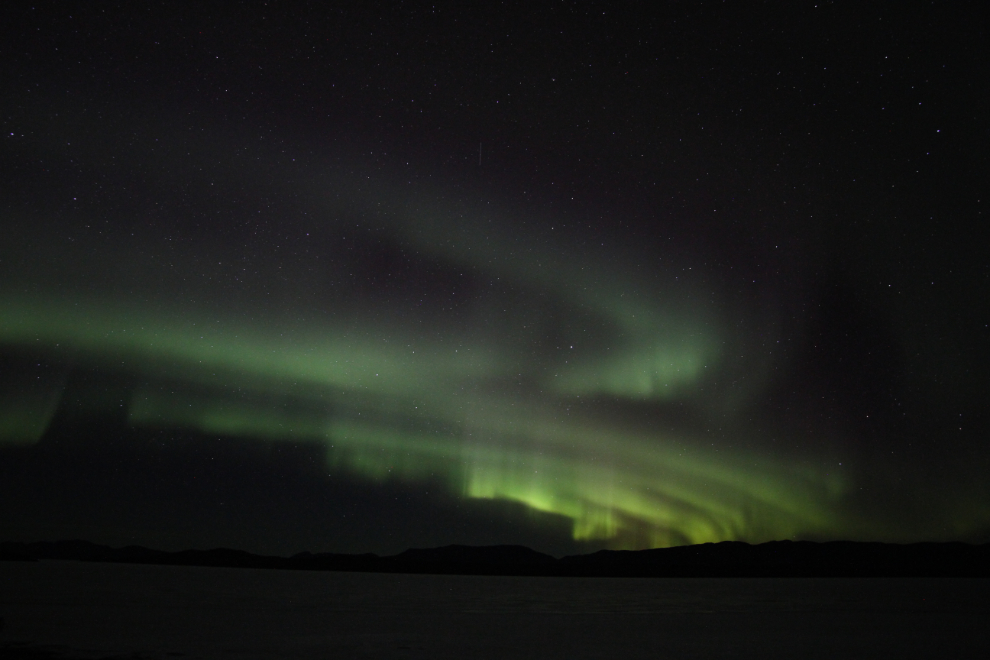
The skies were clearer over the Alaska Highway, and at 01:45 another good show stopped me for a few minutes at Takhini Crossing. The clouds seen in the next 2 photos are what I would have been driving under if I’d continued north – it’s always nice to get confirmation that a decision you made was the right one. I had made other stops on the way to this point, but those photos didn’t make the cut for this post.
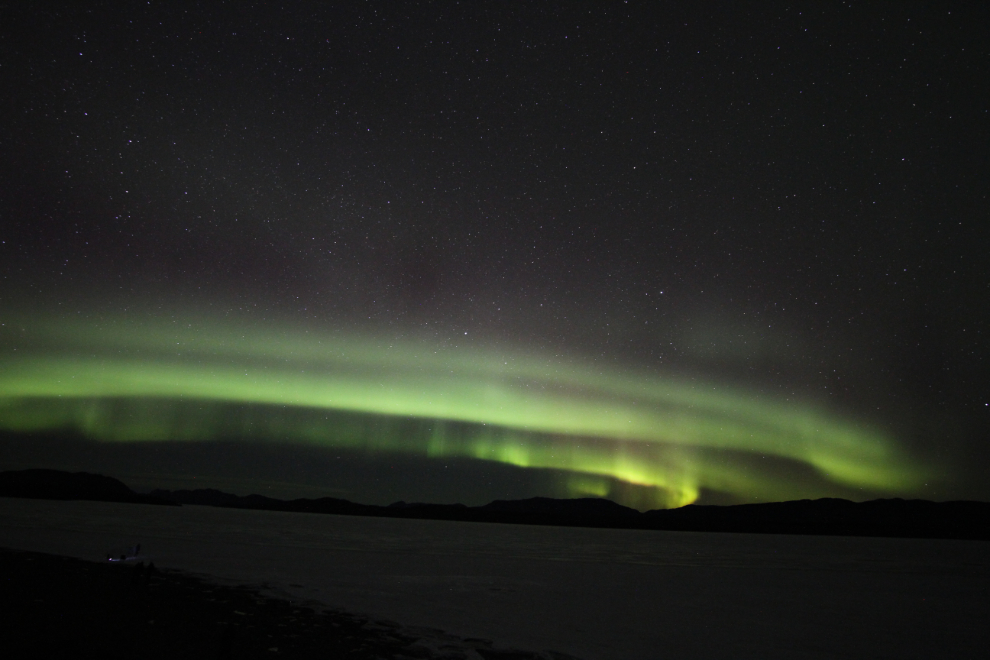
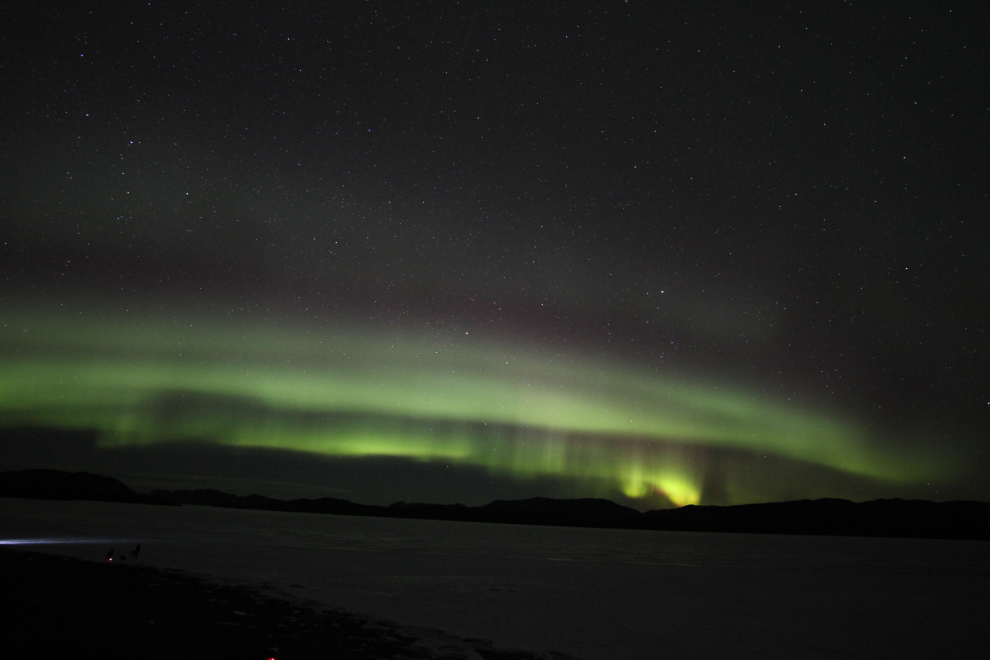
The aurora got quite dull, and before long I had decided that it wasn’t worth driving any further, as clearer skies wouldn’t help the situation. I stopped back at the Takhini River Bridge to take some final shots, and the next 2 photos were shot to show you what different camera settings can do. The first was shot with the White Balance in Automatic, which means basically that the camera will record in the way that its computer says is most realistic.
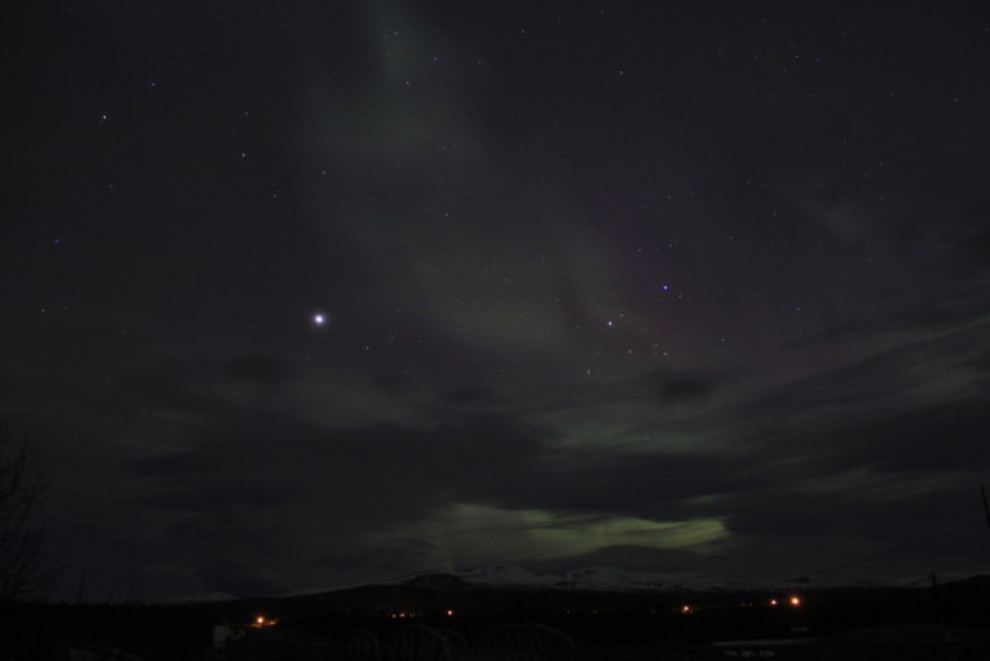
This image, shot seconds later, was shot with the White Balance set to the Daylight (5200 K) setting, so is very much artificial. If you look at a lot of aurora photos, you’ve seen many that look like that, haven’t you? No, although more impressive, that’s not what they really look like 🙂
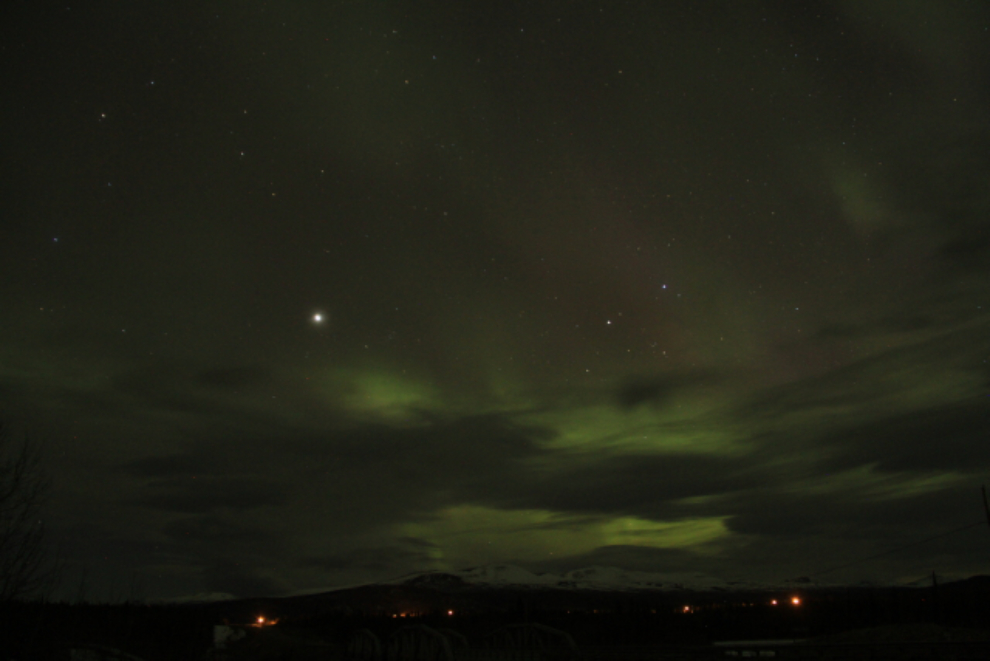
As I got near home, I really wasn’t ready to quit yet, so stopped at McRae (halfway between Whitehorse and my home) and climbed a hill that many families use for sledding with the kids in the winter. This was the view looking east on the Alaska Highway at 03:30. Most of the lights are street lights, with a single vehicle going by below me during the 30-second exposure.

I was in bed by 04:00, and now, as soon as I post this, I’m heading out on the motorcycle to try a new restaurant down the Alaska Highway and then photograph some of the thousands of migrating swans that are resting and feeding an hour south of here 🙂